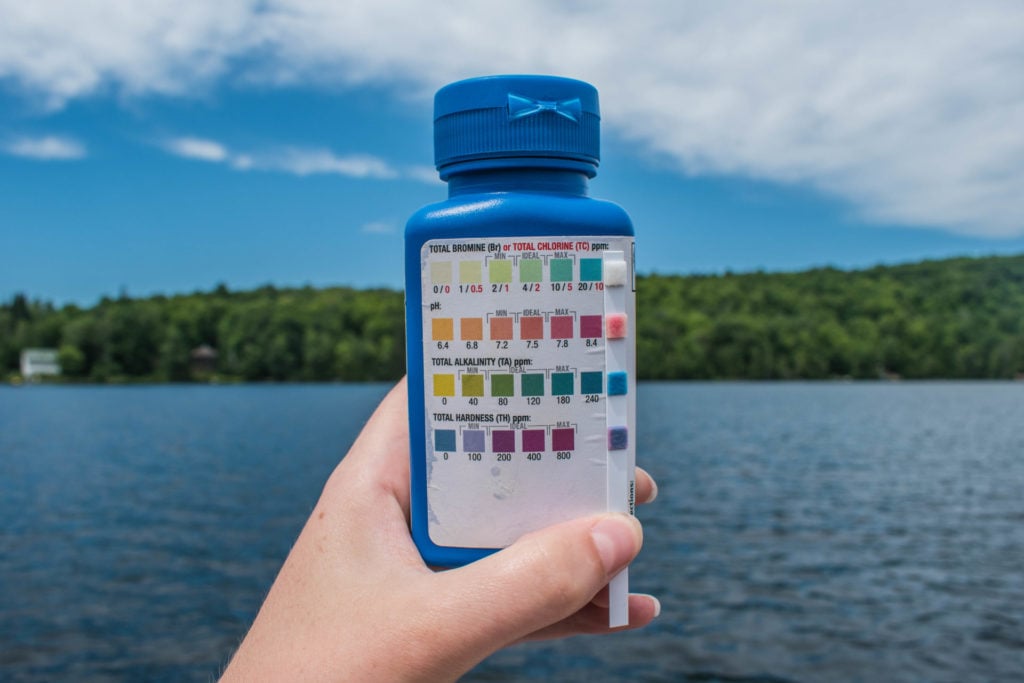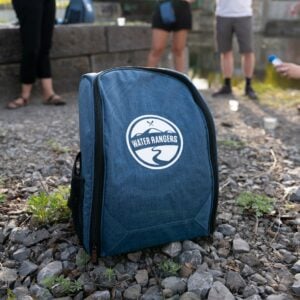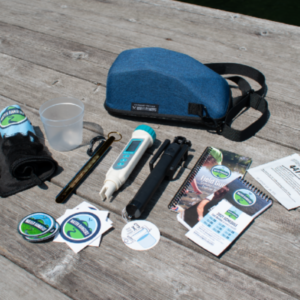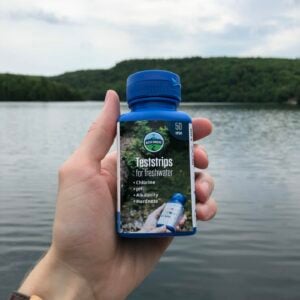Alkalinity in freshwater
What is alkalinity?
Alkalinity is the water’s ability to neutralize acid or resist rapid decreases in pH. Each body of water will have its own typical range of alkalinity. It’s influenced by soil, bedrock, plants, and industrial waste. For example, limestone, which dissolves more easily in water, tends to increase the alkalinity of freshwater.

Why is alkalinity important?
Alkalinity is crucial for fish and aquatic life because it buffers and protects against sudden pH decreases. Aquatic organisms thrive best within specific pH ranges, and alkalinity helps maintain these stable conditions. Essentially, it measures how much acid can be added to the water without significantly altering its pH.
What does an alkalinity measurement mean?
High alkalinity does not necessarily mean bad water quality. Higher alkalinity levels in water generally mean it can tolerate more acid without changing the pH, while lower levels indicate that the waterbody is more likely to have changes in pH.
Alkalinity is measured as the equivalent concentration of calcium carbonate (CaCO₃) in a water sample.
Some common values
The levels of alkalinity are classified as follows:
| Very low | 10 ppm |
| Low | 11 – 50 ppm |
| Moderate | 51 – 150 ppm |
| High | 151 – 300 ppm |
| Very high | >300 ppm |
Water Rangers testing protocol
For this test, we use Taylor Pool and Spa Test Strips. Learn why we selected this brand and our research on the accuracy of various strips.
Pro Tip: If the colour on the test strip appears in the middle of two colours on the bottle, you can record the absolute middle (for example, if the colour is somewhere between 40 and 80, then record a value of 60).
How to test alkalinity
- Rinse sample cup 3 times.
- IMPORTANT! Make sure your hands are dry, since moisture in the container will ruin strips.
- Shake out 1 test strip, close bottle.
- Dip the entire strip in the water. Remove after 2 seconds.
- Wait 20 seconds before reading.
- Compare colours with guide on side of bottle. Line up the colour strips vertically so that you can compare along the spectrum for each value.
Get alkalinity test strips here or as part of a testkit:
-
Freshwater Explorer Testkit$380.00
-
Compact Freshwater Testkit$155.00
-
Teststrips$17.50
Contributing to the community!
Water Rangers is citizen-scientist led. So, if you have any questions, ideas, or notice any errors, please tell us!


